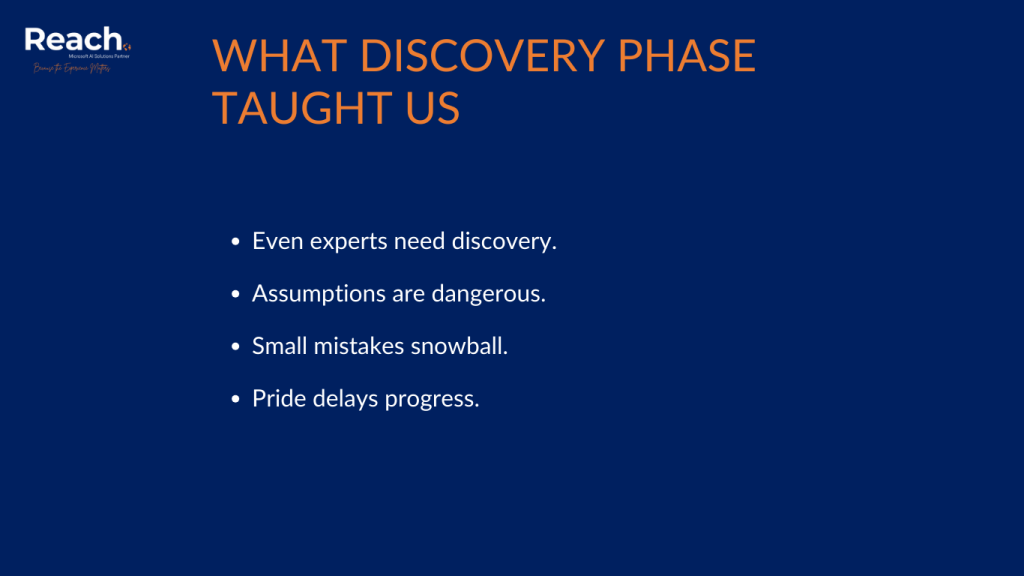The Discovery That Made Us Question Everything
Discovery phases are supposed to reveal problems. That’s their job. But we weren’t prepared for what we found when we audited our own customer insights platform configuration.
Every single form on our website was creating contacts, not leads. Every eBook download, case study download, every demo request—straight to contacts. We’d been fundamentally breaking one of the cardinal rules we preached to clients about our customer insights platform.
Why Contacts vs. Leads Actually Matters
Some readers might think, “What’s the big deal? Contact, lead—it’s all data in the system, right?”
Wrong. This is like building a house and forgetting the foundation. Everything else crumbles without it.
When you create contacts instead of leads, you lose:
- The Qualification Journey: Leads have stages. They progress from inquiry to Marketing Qualified Lead (MQL) to Sales Qualified Lead (SQL). Contacts don’t have this journey—they just exist.
- Scoring and Intelligence: Lead scoring helps you identify hot prospects. Without leads, everyone looks the same—the tire kicker and the ready-to-buy prospect are indistinguishable.
- Nurture Pathways: Leads can enter nurture campaigns based on their behavior and progression. Contacts require manual intervention for everything.
- Funnel Visibility: You can’t see your marketing funnel if you don’t have leads moving through stages. You’re flying blind.
- Clean Data: Our contact database had become a dumping ground. Every form fill, every casual interaction—all mixed with actual customers and real prospects.
The Archaeological Dig Through Our Data
Once we recognized the problem, we had to understand its scope. The audit revealed:
- contacts created from web forms over two years
- No way to distinguish between someone who downloaded a case study and someone who wanted to book a demo
- Marketing campaigns sending the same message to cold prospects and hot leads
- Sales team frustrated because they couldn’t prioritize outreach
- No data on conversion rates because there was nothing to convert from

How Did We Get Here?
The honest answer? Speed and assumptions.
When we initially set up Customer Insights platform, we were moving fast. Someone made a configuration choice—probably thinking it was temporary—and it became permanent through inertia. Classic “we’ll fix it later” that never gets fixed.
But there was a deeper issue: we assumed we knew what we were doing. We implement these systems for clients constantly. Surely, we’d get our own right?
This is the danger of expertise—it breeds blind spots. We were so focused on advanced features and sophisticated campaigns that we missed the fundamental flaw in our foundation.
The Uncomfortable Conversation
The discovery findings led to a difficult team meeting. We had to decide:
Option 1: Band-aid fixes
- Keep the current structure
- Try to work around the limitations
- Implement complex workarounds to simulate lead functionality
Option 2: Rip and replace
- Rebuild the foundation properly
- Reconfigure all forms and processes
- Accept that some historical data would be messy
We chose Option 2. It would be painful, but we knew from client experience that band-aids eventually fail spectacularly.

What Discovery Really Taught Us
Beyond the technical findings, Week 1’s discovery phase revealed crucial insights:
- Even experts need discovery phases: We thought we could skip or abbreviate discovery since we “knew” our own system. We were wrong.
- Assumptions are dangerous: Every assumption we made about our configuration was incorrect.
- Simple mistakes compound: A single configuration choice two years ago had corrupted our entire marketing operation.
- Pride comes before the fall: We were too proud to audit our own system earlier because we were “the experts.”
The Path Forward
By the end of Week 1, we had:
- A complete audit of our current state
- A clear understanding of what was broken
- A plan to rebuild our lead management from scratch
- Buy-in from the team that temporary pain would yield long-term gain
- A healthy dose of humility
The discovery phase had done its job—it showed us the uncomfortable truth. Now we had three weeks to fix two years of accumulated problems.
The key lesson from Week 1: Don’t skip discovery, even (especially) when you think you know what you’ll find. The most dangerous problems are the ones you don’t know exist.
Transform Your Marketing in 4 Weeks
Stop managing spreadsheets. Start generating revenue. Our Customer Insights Platform Rapid Implementation gets you from chaos to automated campaigns in just 4 weeks—the same methodology we used to transform our own marketing.

